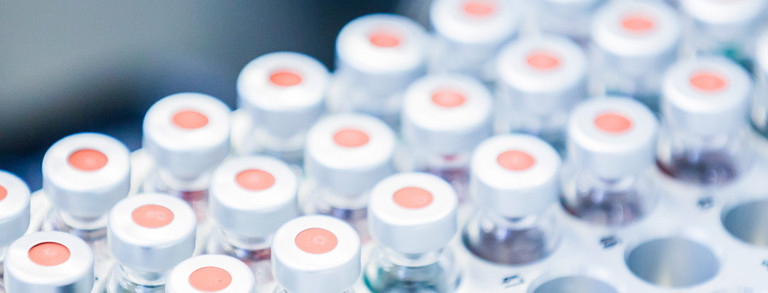Increasing Protein Solubility for High-Concentration Protein Formulations using Advanced Additives
The application of monoclonal antibodies and proteins is an emerging field in biotechnology due to their high specificity with antigens [1]. However, most of the proteins have a poor solubility in water and therefore their application is mostly limited to intravenous administration. In the course of this work, suitable additives shall be identified that increase the protein concentration up to 150 to 200 mg mL-1 to enable subcutaneous administration of these formulations with higher patient compliance.
Description
The state-of-the-art to increase protein concentration in formulations is the selection of additives to a buffer solution. These additives can be salts, amino acids, sugars, surfactants or polymers. The required condition for their addition to high concentration protein formulation (HCPF) is that these substances are approved by the Food and Drug Administration (FDA) [2]. Therefore, many possibilities exist and also combinations of additives have to be considered for HCPF. In addition, boundary conditions like viscosity and pH value have to be considered in order to administrate these solutions to a patient.
Even though high concentration antibody formulations are commercially available, only heuristic approaches exist to recommend what kind of additive shall be used for which protein [3]. Hence, the physical background for protein stabilization in high concentration is not completely understood. After the identification of suitable additives in this work that have stabilization effects on proteins in HCPF, the physical background for protein stabilization will be examined. Finally, a thermodynamic model will be applied to predict protein solubility on the basis of second osmotic virial coefficients.
References
| [1] | S. Mitragotri, P. A. Burke, and R. Langer: "Overcomming the Challenges in Administering Biopharmaceuticals: Formulation and Delivery Strategies" Nature Reviews Drug Discovery, vol. 13, pp. 655-672, 2014 |
| [2] | M. A. Capelle, R. Gurny, and T. Arvinte: "High Throughput Screening of Protein Formulation Stability: Practical Considerations" European Journal of Pharmaceutics and Biopharmaceutics, vol. 65, pp. 131-148, 2007 |
| [3] | N. W. Warne: "Development of High Concentration Protein Biopharmaceuticals: The Use of Platform Approaches in Formulation Development" European Journal of Pharmaceutics and Biopharmaceutics, vol. 78, pp. 208-212, 2011 |







